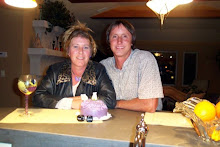Home energy usage is something that will save you money in your check book and home budget if handled correctly. There are many things you can do to increase your home's energy efficiency, (like closing the door so heat will not escape) but this article will focus on a few specific things that will have the most impact..
With the rising cost of nearly every utility bill we need to look at our usage of the energy we use to determine where we can save money. Three obvious areas which we will focus on are
- heating of our home
- heating of our water
- insulating our windows and doors
In heating your home, the thermostat is crucial to the number of times the furnace turns on and off. By updating your thermostat to a programmable thermostat, you get a much more efficient use of energy. The circular type has a 6% variance in temperature as compared to the programmable one which has a 1% variance. There is a little savings here.
The programmable thermostat is so sophisticated that you can program it to turn the furnace on when the temperature gets to a certain point, and turn off at another desired temperature. Not only this, but you can turn the furnace down while you are not at home, and program it to turn on 30 minutes before you arrive home so it will be warm when you get there. Likewise, you can turn the temperature down at say 10:30pm and then up again hour before you get up in the morning thus, you are not heating the home unnecessarily, By programing your schedule into the unit, you can have a considerable savings on heating your home.
As for the installation of a programmable thermostat, you can do it yourself and for around $55 for the unit you can start getting savings immediately. They are easier to install than to learn to program them.
Your furnace itself, can be more or less efficient, depending on the age of your furnace. If your furnace is over 15 years old, it likely is not an energy efficient one. You can get 80% to 90% energy efficient furnaces which coupled with the programmable thermostat, you will get the greatest savings.
Heating our water is another extreme amount of energy loss item in our homes. Consequently, we need to address what modern technology has to offer.
First of all, the traditional water heater is a great source of heat loss unless it is insulated. There are water heater "blankets" that are insulation that is wrapped around the water heater to hold the heat inside. You may shower and put the dishwasher through in the morning and then not need the hot water until evening for another load of dishes. The water heater is keeping the water hot all day, while heat is escaping unless the tank is insulated.
Technology has created the tankless water heater which is basically hot water "on demand," with no tank. Up until recently, these tankless heaters have been needed at each sink , shower, tub, and laundry facilities. Now they have developed a tankless unit that goes in the plumbing in the same position as the traditional water heater. Although these tankless heaters may cost a little more, the savings over the long haul make it worth the investment, year after year. At the very least, you'll want to insulate your water heater with an insulation blanket.
Another great loss of energy in your home is around windows and doors. Again, energy efficient windows and doors will help greatly in preventing loss, or lack of it, through windows and doors.
If you can see daylight under your outside doors or around your windows, there can be a lot of heat escaping through those holes. An insulation strip along the bottom of the doors will stop the infiltration of cold air for your outside doors.
Windows that have leaks can be sealed up by using a removable caulking for the winter months, as long as you don't have to open the window. The caulking can be peeled off easily when warmer weather comes.
If you don't believe you have any leakage around your windows and doors, just do an inspection of all your window sills and door sills after a great dust storm. If you find an accumulation of dust in specific places on your sills, you'll know you have a "leak", you just don't know where the leak is.
You can also check for leaks with a lighted candle during a wind storm. Move the candle around the edge of the window and if the flame is blown by the wind, you'll know exactly where the leaks are. NOTE: This method is extremely dangerous if you have draperies, so use extreme caution when using a candle.
By applying the above mentioned energy savings tips you can generally make a significant savings (up to 30%) in your home budget. I'm sure you'll agree, when it comes to money - "every little bit helps."
Linda Baxter is a piano teacher, and stay at home mom of nine children, (22 grandchildren) who acted as General Contractor for building their retirement home. She hired and paid sub-contractors, was overseer of all construction work (with the help of her husband, RL), and did most of this from her "armchair".and telephone. She freely shares her experiences on her website, http://www.home-built4u.com, hoping to help other potential owner/builders escape some of the pitfalls she and RL experienced, of being their own General Contractor. BIO
Deck Building BooksStructural Engineering Books

No comments:
Post a Comment